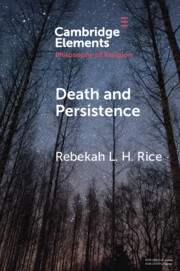Element contents
Death and Persistence
Published online by Cambridge University Press: 19 April 2022
Summary
- Type
- Element
- Information
- Online ISBN: 9781108688956Publisher: Cambridge University PressPrint publication: 12 May 2022
References
- 3
- Cited by



